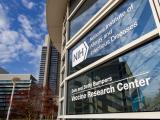Nov 7, 2008 (CIDRAP News) The Government Accountability Office (GAO) has listed public health emergency preparedness and food safety as two of 13 "urgent issues" that will need attention from President-elect Barack Obama and the new Congress next year.
In statements released online yesterday, the GAO, Congress's investigative agency, calls on the government to take several specific steps to strengthen public health preparedness, especially for pandemic influenza, and to improve coordination of food safety efforts.
Listing the 13 issues in a press release, Comptroller General Gene Dodaro said, "With the serious challenges related to financial markets and the economy, the financial crisis facing the nation, two wars under way, and the first transition since 9/11 and the creation of a Department of Homeland Security, this is absolutely a unique time.
"GAO has combed through all of our recent work to help identify where our work can help address urgent challenges facing the nation now, to assist new appointees in every agency [to] zero in on the challenges of that particular agency, and to help identify areas with the potential to save the nation billions of dollars."
The GAO said the 13 urgent issues are the centerpiece of a new Web site it launched yesterday in an effort to help smooth the transition to the new administration and Congress. The site includes statements on each of the 13 issues.
Preparedness recommendations
The GAO makes nine recommendations for improving public health preparedness, all of them drawn from previous GAO reports. Five of these explicitly relate to the threat of a flu pandemic:
- The Homeland Security (DHS) and Health and Human Services (HHS) departments should conduct joint testing and training exercises for pandemic flu to ensure that leadership roles are clearly defined and that leaders can effectively carry out shared responsibilities.
- The Homeland Security Council should set up a process and schedule for updating the national pandemic implementation plan in a way that includes nonfederal stakeholders.
- HHS should "expeditiously" complete its guidance to help state and local public health agencies decide how to use limited supplies of antivirals and pandemic vaccines.
- In the interest of pandemic preparedness, DHS should make fuller use of the coordinating councils that were set up to facilitate joint public-private planning for critical infrastructure protection.
- HHS and DHS should hold more meetings of the states in the five pandemic planning regions to help them address gaps in their planning.
In addition, the statement says HHS should serve as a clearinghouse to enable states to share information on altered standards of care, for the sake of helping states determine how they will allocate scarce medical resources in a mass-casualty event.
Sorting out food safety efforts
In its statement on food safety, the GAO reiterates points it has made a number of times about the fragmented federal regulatory system, with 15 different agencies involved in administering food safety laws. This leads to inconsistent oversight and ineffective coordination, undermines strategic planning for food production inspections, and hinders responses to foodborne disease outbreaks, the agency said.
In addition, the GAO said, the allocation of funds among agencies is skewed: the US Department of Agriculture regulates about 20% of the food supply but gets most of the money for food safety inspections, while the Food and Drug Administration oversees about 80% of the food supply with only 24% of the money.
"Congress and the executive branch should create the environment needed to look across the activities of individual programs and toward the goals the federal government is trying to achieve," the statement says. Specifically, the agency says:
- The president should reconvene the President's Council on Food Safety or create another forum in the short term. For the long term, the president should consider other structures to promote interagency coordination on food safety.
- The executive branch should develop a "governmentwide performance plan" that provides a cross-agency perspective to help ensure agencies' goals are complementary and help leaders balance trade-offs in allocating resources.
- Congress should assign the National Academy of Sciences or an expert panel to analyze alternative food safety organizational structures.
- Congress should pass "comprehensive, uniform, and risk-based food safety legislation."
See also:
Nov 7 GAO news release
http://www.gao.gov/press/press-transition-release2008nov06.pdf



















